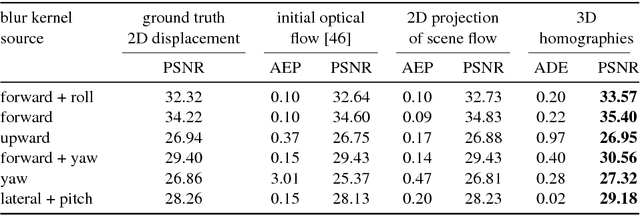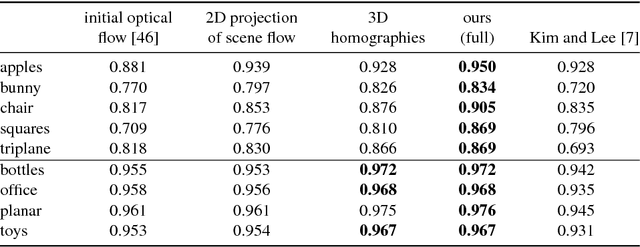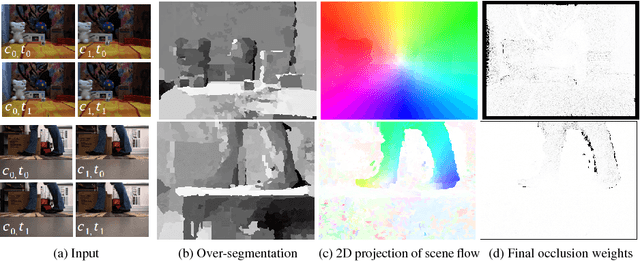Anita Sellent
Stereo Video Deblurring
Jul 28, 2016



Abstract:Videos acquired in low-light conditions often exhibit motion blur, which depends on the motion of the objects relative to the camera. This is not only visually unpleasing, but can hamper further processing. With this paper we are the first to show how the availability of stereo video can aid the challenging video deblurring task. We leverage 3D scene flow, which can be estimated robustly even under adverse conditions. We go beyond simply determining the object motion in two ways: First, we show how a piecewise rigid 3D scene flow representation allows to induce accurate blur kernels via local homographies. Second, we exploit the estimated motion boundaries of the 3D scene flow to mitigate ringing artifacts using an iterative weighting scheme. Being aware of 3D object motion, our approach can deal robustly with an arbitrary number of independently moving objects. We demonstrate its benefit over state-of-the-art video deblurring using quantitative and qualitative experiments on rendered scenes and real videos.
Parametric Object Motion from Blur
Apr 20, 2016



Abstract:Motion blur can adversely affect a number of vision tasks, hence it is generally considered a nuisance. We instead treat motion blur as a useful signal that allows to compute the motion of objects from a single image. Drawing on the success of joint segmentation and parametric motion models in the context of optical flow estimation, we propose a parametric object motion model combined with a segmentation mask to exploit localized, non-uniform motion blur. Our parametric image formation model is differentiable w.r.t. the motion parameters, which enables us to generalize marginal-likelihood techniques from uniform blind deblurring to localized, non-uniform blur. A two-stage pipeline, first in derivative space and then in image space, allows to estimate both parametric object motion as well as a motion segmentation from a single image alone. Our experiments demonstrate its ability to cope with very challenging cases of object motion blur.
 Add to Chrome
Add to Chrome Add to Firefox
Add to Firefox Add to Edge
Add to Edge